- Home
- slideshows
- miscellaneous
- The climate crisis is inherently unfair. These 9 countries will get hit especially hard as the globe heats up.
The climate crisis is inherently unfair. These 9 countries will get hit especially hard as the globe heats up.
In India, heat translates to hunger. The country could bear more than 25% of all global climate-related deaths due to decreasing food availability by 2050, according to a 2016 analysis.

In Namibia, the government is auctioning off elephants and giraffes as part of a strategy to cope with a drought that has left one in five Namibians without food.
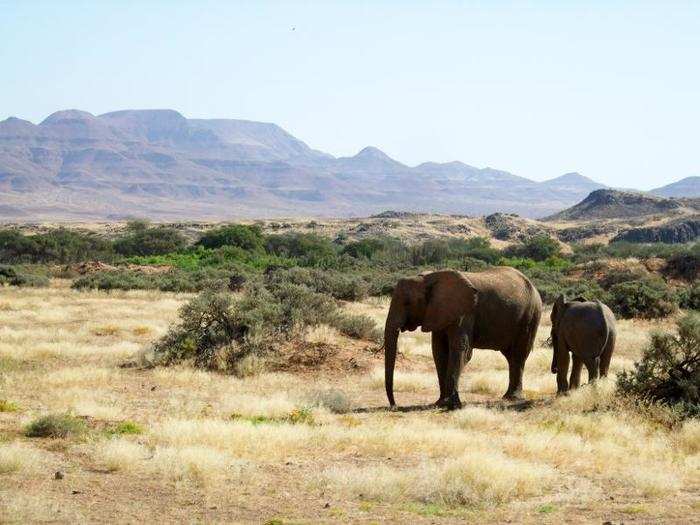
In May, a country-wide drought in Namibia — the fifth in the last six years — led the government to declare a state of emergency. As animals starve alongside humans, the government announced in June that it would sell over 1,000 wild animals to save them from death and raise money for conservation.
The Ministry of Agriculture projected a 53% reduction in crop yields due to this drought. By the 2050s, Namibia could be up to 45% more vulnerable to food insecurity than it was 2010, according to research from the Met Office and the World Food Programme (WFP).
By the same calculations, Mauritania will be 50% more vulnerable to food insecurity by 2050.
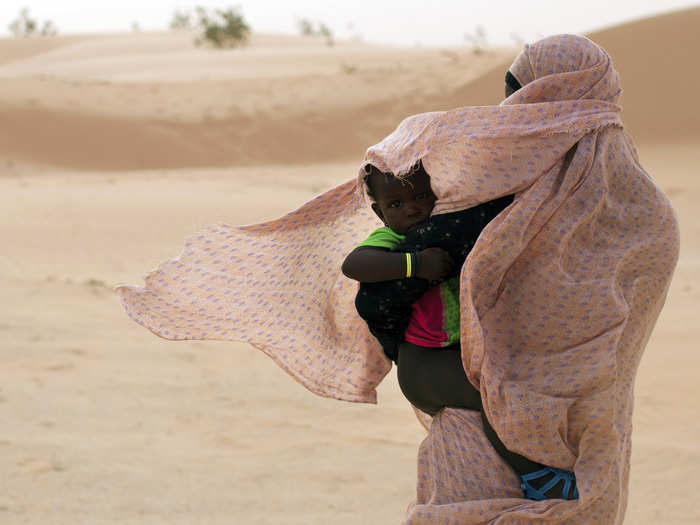
Mauritania is particularly susceptible to the changing climate because 90% of agriculture there is for subsistence, so crop success is everything.
The World Bank projects that Mauritania will suffer an extra month of heat with temperatures over 35 degrees Celsius (95 degrees Fahrenheit) each year by 2050. The country is likely to see shorter, more intense rainy seasons that cause flooding; but the rest of the year, crops will be dry.
China is expected to face the highest number of food insecurity deaths per capita due to climate change, with up to 308 deaths per million people.

That translates to over 330,000 total deaths – 47% of the worldwide loss of human life due to climate-related food scarcity.
Much of China's food insecurity comes from its vulnerability to natural disasters like drought, flood, and storms, which affect about one third of the country's agricultural land. Those problems are all projected to get worse as sea levels rise and heat waves get more frequent. Some parts of China could wind up uninhabitable by the end of the 21st century.
In addition to food shortages, sea-level rise also poses dangerous existential threat. It could lead some countries to disappear altogether, including the Seychelles, where 115 islands are at risk.

Most low-lying atolls will be uninhabitable by 2050 as sea levels rise and salty floods damage infrastructure and contaminate fresh water sources, according to a 2018 report published in the journal Science Advances.
The Seychelles faced a close call in May 2007, when high tides flooded land 50 meters inland. About 80% of the country's economic development is centered in coastal flood areas.
The Marshall Islands are vulnerable too, since 99% of the country's population lives along the coast.
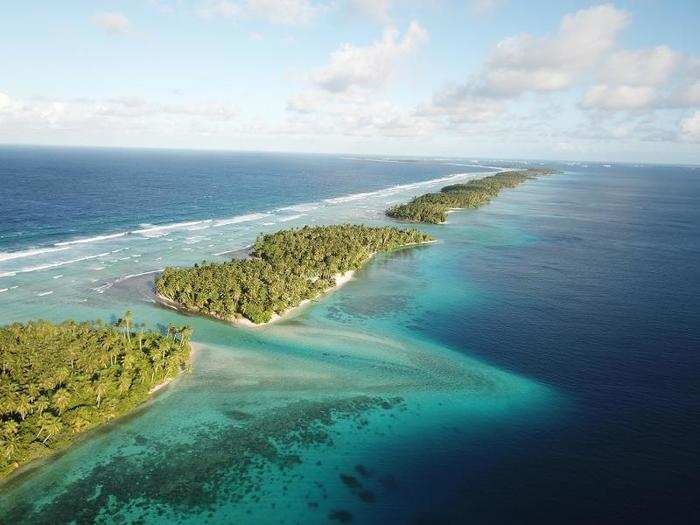
The Marshall Islands are among the most vulnerable of the world's low-lying islands. Satellite measurements show sea levels in this area of the Pacific are rising at 8 to 10 millimeters per year, about three times faster than the global average.
The effects of rising sea levels are "likely to be of a magnitude that will disrupt virtually all economic and social sectors in small island nations," according to the UN's Intergovernmental Panel on Climate Change (IPCC).
In Maldives, the threat posed by higher seas is immediate. Over 80% of its land area sits less than 1 meter (3.2 feet) above sea level.
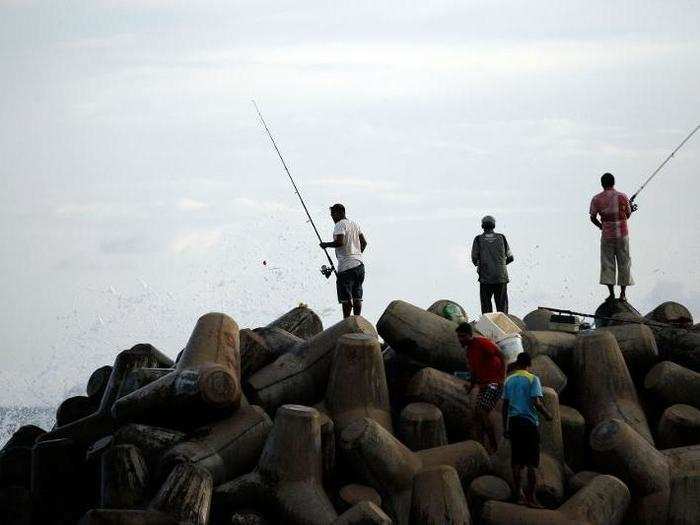
The Maldives is made up of 25 coral atolls and 1,190 small, low-lying islands in the Indian Ocean. Much of the country's economic activity – fisheries and tourism infrastructure – and half of all its settlements are located just 100 meters from the shoreline.
Countries like Bangladesh will suffer a triple whammy of heat, rising tides, and food insecurity.
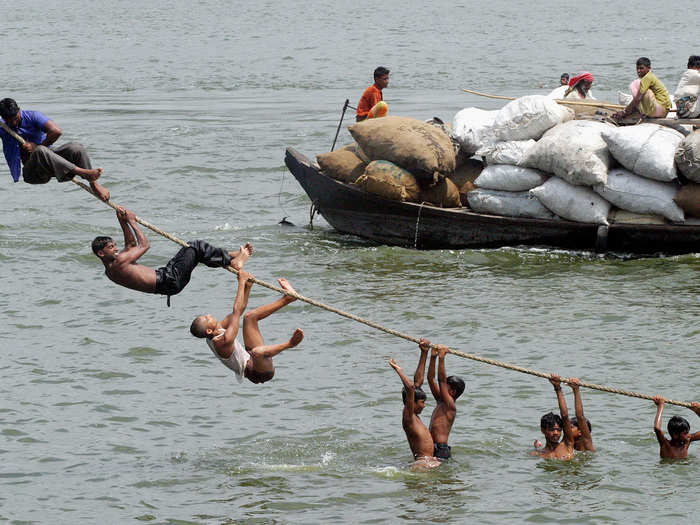
A sea-level rise of 30 to 45 centimeters (about 1 to 1.5 feet) would displace more than 35 million people along the Bangladesh coast, according to the IPCC. The World Bank expects this much rise to occur sometime between 2050 and 2100.
Oceans around Bangladesh are projected to rise 1 meter (3.2 feet) by 2100, swallowing 17.5% of the country's land mass, according to the World Bank. The country will also see increasing rainfall, flooding, drought, and 35.8 more days above 35 degrees Celsius (95 degrees Fahrenheit) on average annually.
That means Bangladesh could lose 32% of its wheat and 9% of rice production by 2050. One analysis estimated the country could suffer over 13,000 deaths due to climate-related food insecurity. Already, about one quarter of Bangladesh's population is food insecure.
Vietnam faces a similar future, with sea levels expected to displace up to 12 million people from its coastline by the end of the century.
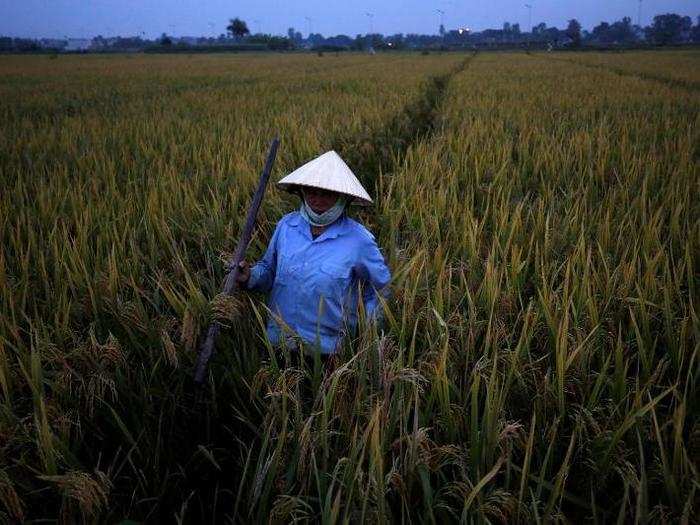
The rising seas will flood river deltas as well, contaminating rice paddies with salt.
As if that weren't enough, the World Bank projects the country will heat up over 3 degrees Celsius by the end of the century if the world doesn't slow its rate of greenhouse-gas emissions. All that extra heat, combined with the salt from the rising oceans, could cut rice yields 10% by 2040 and cost Vietnam 3.5% of its national income.
Popular Right Now
Popular Keywords
Advertisement